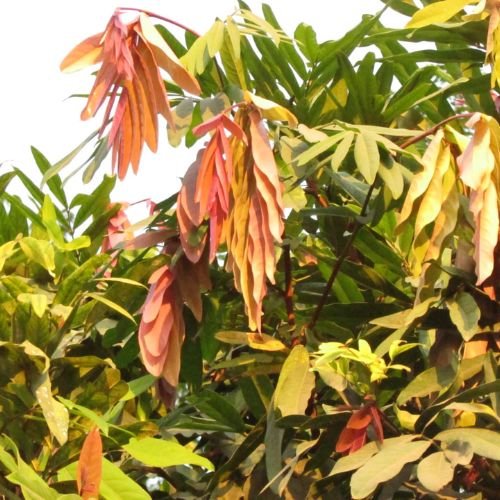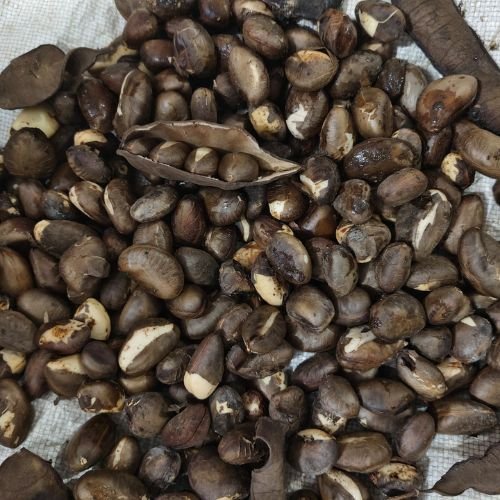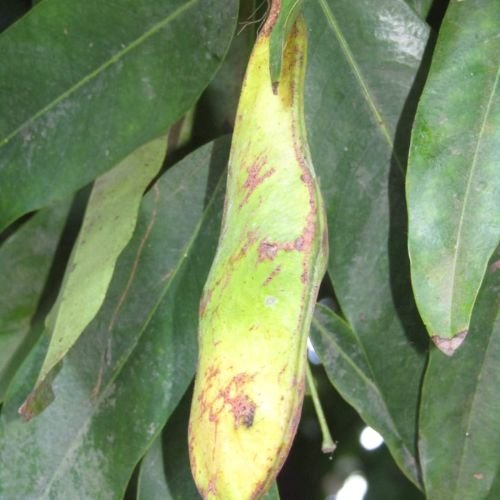The Sita Ashoka tree, or Saraca asoca, is more than a beautiful plant. It symbolizes beauty and healing in Indian culture, particularly in Western India. Legend has it that Sita, the heroine of the Ramayana, found comfort beneath its shade during her exile, which is why the tree is often seen as a symbol of hope and relief.
Beyond its rich spiritual significance, the Sita Ashoka tree is also prized for its medicinal properties. With its stunning orange flowers and lush foliage, it’s no surprise that this tree is cherished for its beauty and its many benefits, especially for women’s health. If you’re considering adding a Sita Ashoka tree to your space, read on to discover how to grow, care for, and make the most of this incredible tree.
Plant Specifications of the Sita Ashoka Tree
The Sita Ashoka tree is a medium-sized, evergreen tree that thrives in tropical climates. Here’s a quick breakdown of what you can expect from this tree:
| Feature | Details |
| Scientific Name | Saraca asoca |
| Height | 10-15 feet |
| Spread | 10-12 feet |
| Growth Rate | Moderate; typically matures in 3-5 years |
| Flowering Season | Spring to early summer |
| Flower Color | Vibrant orange to reddish hues |
| Leaf Type | Glossy, dark green leaves |
| Soil Requirements | Well-drained, loamy, slightly acidic soil |
| Sunlight | Full sun to partial shade |
| Drought Resistance | Moderate |
This tree flourishes in warm climates and is a standout choice for anyone looking to add a touch of elegance to their garden.

Types of Sita Ashoka Tree (Different Varieties)
There are several varieties of the Sita Ashoka tree, each with unique features. Here’s a quick look at the most common ones:
- Saraca asoca: The classic variety, widely known and used for medicinal purposes.
- Saraca indica: This variety has larger, yellow flowers found in southern India and Sri Lanka.
- Saraca declinata: A rarer variety with slightly smaller flowers, great for landscaping.
Each variety shares the same essential characteristics but may differ in flower color and overall size.
How to Plant and Care for a Sita Ashoka Tree
Planting and caring for the Sita Ashoka tree is straightforward. Just follow these simple steps to give your tree the best chance at thriving:
1. Find the Right Spot
- Choose a location with plenty of sunlight. While the tree can tolerate some shade, it will do best in full sun.
- Make sure the soil drains well. The Sita Ashoka tree doesn’t like to have its roots sitting in water.
2. Prepare the Soil
- This tree loves slightly acidic soil. Aim for a pH between 6.0 and 7.0.
- Mix in some compost or well-rotted manure to improve soil fertility and drainage.
3. Plant the Tree
- Dig a hole that’s about twice the size of the root ball.
- Place the sapling in the hole, ensuring the roots spread evenly.
- Fill the hole with soil, then water it well to help the roots settle in.
4. Watering and Maintenance
- Water the tree regularly, but make sure not to overwater. The soil should remain moist, not soggy.
- Prune any dead or damaged branches to keep the tree healthy and encourage new growth.
- Fertilize your tree twice a year with organic fertilizer to support healthy growth.
5. Protect from Pests
- The Sita Ashoka tree is generally resistant to pests, but you may encounter some aphids or caterpillars. Use natural pesticides if needed.

Benefits and Uses of the Sita Ashoka Tree
Medicinal Benefits:
- Ashoka Tree Bark Health Benefits: The bark is used in Ayurvedic medicine to regulate menstrual cycles and treat women’s health issues like excessive bleeding and uterine problems.
- Ashoka Tree for Menstrual Health: Known for easing menstrual cramps and promoting hormonal balance, the tree has been a go-to remedy for centuries.
- Ashoka Tree Flower Medicinal Uses: The flowers have soothing, anti-inflammatory properties and are often used to treat various skin conditions.
- Ashoka Tree Health Benefits for Skin: The tree extract is also used in skin care products to calm irritation and promote clear, healthy skin.
Environmental Benefits:
- Ashoka Tree for Landscaping: Thanks to its lush green leaves and vibrant flowers, it’s a beautiful addition to any garden. It also makes for a great decorative tree for landscaping.
- Ashoka Tree Drought-Resistant Features: Once established, the Sita Ashoka tree is drought-resistant, which makes it a fantastic choice for areas with water shortages.
- Sita Ashoka for Improving Soil Quality: The tree’s roots help improve the surrounding soil by enhancing its texture and fertility, making it ideal for improving garden soil.
Best Placement for the Sita Ashoka Tree
Where to plant the Sita Ashoka tree? Here are some great places to consider:
- In Your Garden: It’s perfect for gardens, where its beauty and symbolism can shine.
- In Temple and Religious Spaces: This tree is often planted in temple gardens due to its sacred significance in Hinduism.
- Along Roadways and in Urban Areas: Thanks to its drought tolerance, it’s an excellent choice for street plantings in cities or highways.
- Indoor Spaces: If you have a spot with good sunlight, the tree can also be grown indoors to add a touch of nature to your home or office.

FAQs about the Sita Ashoka Tree
Can I buy a Sita Ashoka tree for sale online?
You can find Sita Ashoka trees for sale at our Nursery
How long before the Sita Ashoka tree starts flowering?
Typically, the tree will start flowering 2-3 years after planting, depending on the growing conditions.
Is the Sita Ashoka tree difficult to maintain?
Not at all! As long as it gets enough sunlight and isn’t overwatered, it’s a relatively low-maintenance tree.
Can I grow a Sita Ashoka tree in a pot?
While the tree can be grown in a pot, it does best when planted in the ground with room to spread its roots.
Trivia of the Sita Ashoka Tree
- The Sita Ashoka tree is mentioned in the Ramayana, where Sita is believed to have found comfort under its branches during her exile.
- The word “Ashoka” translates to “without sorrow,” reflecting the tree’s role in providing comfort and relief.
- The tree is often found in temple gardens and is considered sacred in Hindu rituals.
The Sita Ashoka tree is not just a stunning addition to your garden; it’s also a tree with deep cultural, medicinal, and environmental significance. Whether you want to grow one for its beauty, healing properties, or spiritual meaning, the Sita Ashoka tree will be valuable to any space. Happy planting!



